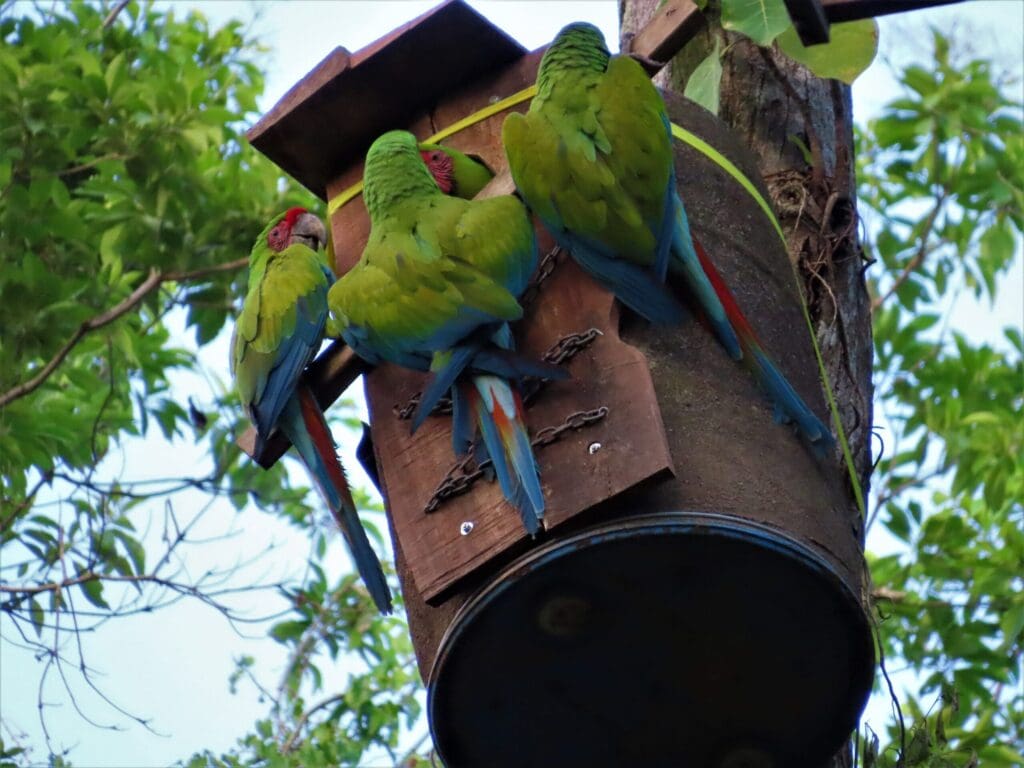Great Green Macaws: Ara Manzanillo
In 2010, WPT partner Ara Manzanillo, then The Ara Project, initiated a Great Green macaw reintroduction project in the South Caribbean region of Costa Rica in a national wildlife refuge near Manzanillo. Their objective was to establish a self-sustainable Great Green Macaw (Ara ambiguus) population in the region and have the group eventually link with the remaining populations in northern Costa Rica. The team provides education about the macaws to local communities, students and conservationists; works to restore key forests, rescues birds injured or caught in illegal trade, and uses nest boxes to increase breeding success.
As of the 2022 breeding season, the team installed 20 artificial nests where 50 Great Green Macaw chicks fledged. The 2023 breeding season saw over 60 chicks fledge from artificial nests, with many other juveniles hatched in natural cavities joining the adult population.
To counter deforestation, the team cultivates native trees to restore natural vegetation. Thus far they have planted over a thousand trees, primarily Mountain Almonds, the main source of the macaws’ food. Their latest effort is to manage or enrich 30 hectares of forest surrounding the field station with select native species.
Status: IUCN Critically Endangered / CITES Appendix I
Population: 500-1000 mature individuals.
Range: A.a. ambiguus: Caribbean lowlands of E Honduras to NW Colombia. A.a. guayaquilensis: W Ecuador, Esmeraldas; smaller numbers in the Cordillera de Chongon-Colonche, Guayas.
Natural history: These macaws are found at altitudes up to 600 m (1968 ft) in Costa Rica and 1000 m (3280 ft) in Panama and are seen in pairs or small groups foraging on seeds, nuts, fruits, flowers, bulbs, roots and bark. Almendro tree seeds are a major part of the diet. Breeding is May-October in Ecuador, dry season (December-April) in Costa Rica. Nest is in a tree hollow.

